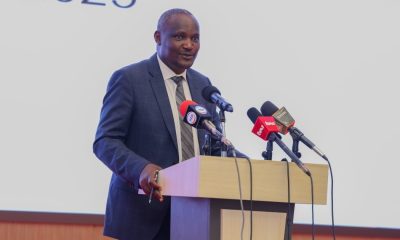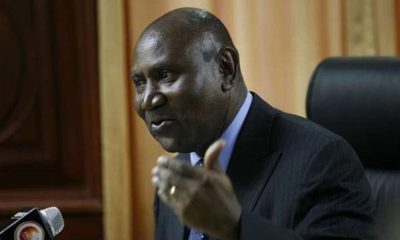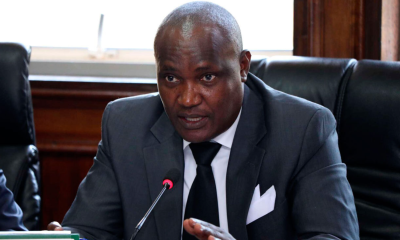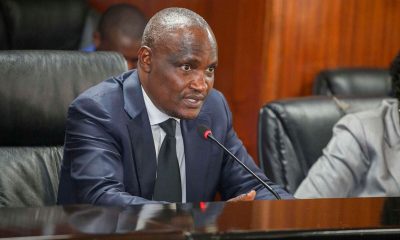Economy
End of an Era: Shocker As Government Says It Doesn’t Have Money For Free Primary and Secondary Schools Education
While the government requires Sh22,244 per secondary school learner, it has only been disbursing Sh16,900 for the past seven years.
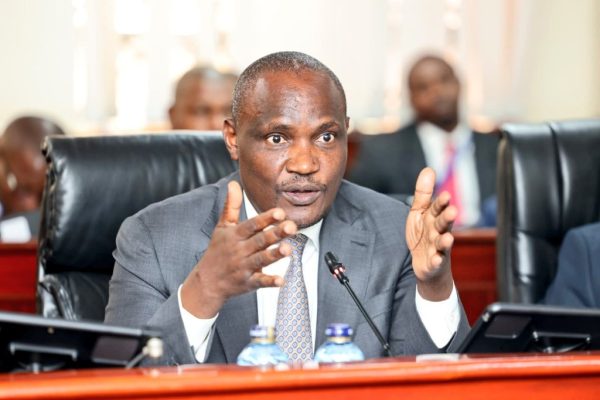
Treasury CS John Mbadi and Education CS Migos Ogamba deliver crushing blow to millions of Kenyan families
In a bombshell revelation that has sent shockwaves across the country, the Kenyan government has admitted it can no longer sustain free primary and secondary education due to severe financial constraints. Treasury Cabinet Secretary John Mbadi, appearing before the National Assembly Committee on Education alongside his Education counterpart Migos Ogamba, delivered the devastating news that has effectively marked the end of an era for Kenya’s education sector.
“The truth of the matter is we don’t have the capacity to finance Free Primary Education and Free Day Secondary education. Let us not live a lie,” Mbadi told stunned lawmakers on Thursday, his words cutting through years of political promises and dashing the hopes of millions of Kenyan families who have relied on government support to educate their children.
The Treasury boss revealed the harsh arithmetic behind the crisis. While the government requires Sh22,244 per secondary school learner, it has only been disbursing Sh16,900 for the past seven years. The situation is equally dire for junior secondary schools, where the shortfall sees learners receiving only Sh10,000 against the required Sh15,042. Only primary schools have been receiving their full capitation of Sh1,420 per learner, creating a false sense of security that has now been shattered.
Mbadi attributed the crisis to Kenya’s constrained fiscal environment, painting a picture of a government stretched thin by competing demands. High debt repayment obligations have created a stranglehold on public finances, while critical security interventions and emergency responses continue to drain the national coffers. “The government is failing to do this because of other competing needs such as debt repayments which we have been making as they are too high compared to before,” he explained, his tone reflecting the weight of a financial burden that has finally become unbearable.
The implications extend far beyond school fees. In another crushing blow to parents already struggling with the rising cost of living, Mbadi announced that the government will no longer cover examination fees amounting to Sh5.9 billion. While fees will be settled for the current financial year, he was categorical that continuing this support is “not tenable.” A proposal has been submitted to Cabinet to limit fee waivers to only needy learners going forward, effectively creating a two-tier system that could lock out thousands of students from sitting their national examinations.
Higher education institutions face an even more existential crisis. The government announced drastic measures including staff layoffs, closure of satellite campuses, and outsourcing of non-core services to prevent university collapse. These institutions, already reeling from years of underfunding, now face the prospect of fundamental restructuring that could alter the landscape of higher education in Kenya permanently.
The funding crisis has been compounded by revelations of massive corruption that have made the situation even more tragic. MPs cited instances where Sh50 million each was disbursed to non-existent schools, with Luanda MP Dick Maungu specifically naming Kamuret and Bomet secondary schools as phantom institutions that received funding while real schools struggled for basic resources. The ghost schools scandal has added insult to injury, revealing how scarce education funds have been systematically looted while genuine institutions faced closure.
Parliamentary reaction was swift and furious. Lawmakers expressed outrage at the admissions, with many demanding immediate policy changes. Teso South MP Mary Emase called for rewriting education policy to match actual funding levels, while Kibra MP Peter Orero urged allowing schools to charge additional fees. “It is regrettable that schools have no money,” Orero stated, his words reflecting the desperation facing educational institutions across the country.
The government’s admission signals a seismic shift in Kenya’s education landscape that will be felt most acutely by low-income families. Parents must now prepare for additional school fees to bridge funding gaps, potential payment of examination fees, and reduced government support for educational programs. The promise of free education, once a cornerstone of Kenya’s development agenda, has crumbled under the weight of fiscal reality.
As Kenya grapples with this education funding crisis, the government’s proposal to consolidate scattered funds, including those from the National Government Constituency Development Fund, represents one potential solution. However, for millions of Kenyan families who have relied on free education as a pathway to better opportunities, this development marks not just the end of a policy, but the end of a dream that education could be the great equalizer in Kenyan society.
The full ramifications of this policy shift will unfold in the coming months, but one thing is certain: the landscape of Kenyan education has been forever altered, and the burden of financing children’s futures has shifted decisively from the state back to families already struggling to make ends meet.
Kenya Insights allows guest blogging, if you want to be published on Kenya’s most authoritative and accurate blog, have an expose, news TIPS, story angles, human interest stories, drop us an email on [email protected] or via Telegram
-

 Investigations7 days ago
Investigations7 days agoBillions Stolen, Millions Laundered: How Minnesota’s COVID Fraud Exposed Cracks in Somali Remittance Networks
-

 News1 week ago
News1 week agoUS Moves to Seize Luxury Kenya Properties in Sh39 Billion Covid Fraud Scandal
-

 Investigations7 days ago
Investigations7 days agoJulius Mwale Throws Contractor Under the Bus in Court Amid Mounting Pressure From Indebted Partners
-
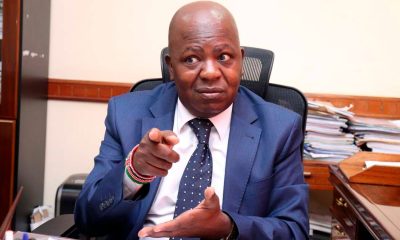
 News1 week ago
News1 week agoMAINGA CLINGS TO POWER: Kenya Railways Boss Defies Tenure Expiry Amid Corruption Storm and Court Battles
-

 Americas7 days ago
Americas7 days agoUS Govt Audits Cases Of Somali US Citizens For Potential Denaturalization
-

 Americas2 days ago
Americas2 days agoTrump Says US Needs Greenland For Its National Security
-

 Sports2 days ago
Sports2 days agoThe Easy Way to MSport Ghana: From Login to Your First Bet
-

 Sports2 days ago
Sports2 days agoWhat Makes Yesplay the Go-To Gambling Platform for South Africans?



